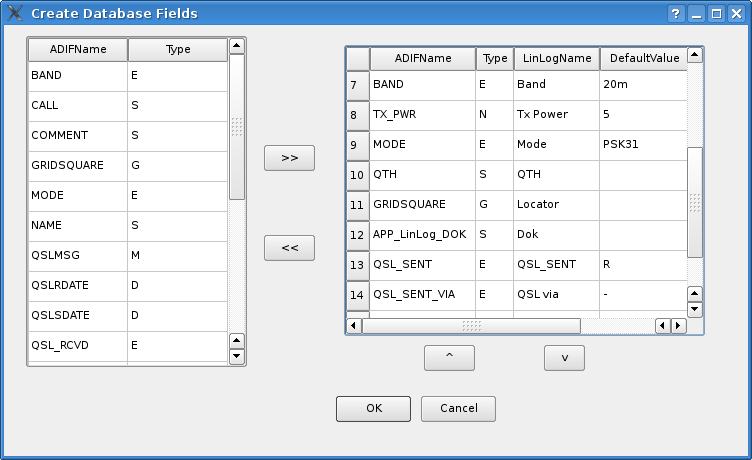
Start LinLogBook and go to Edit menu. Select Preferences and fill out the form. The
directory entry is relative to your home directory. It is a good idea to choose the
same directory where you have put BaseTable.sql.
Select the File menu and create a new database. Then change to the Edit menu and
create the basetables. You can use the file BaseTables.sql distributed with
LinLogBook or you can adjust the tables to your needs by modifying the file
BaseTables.sql.
The table ADIF contains the possible entries your logbook could contain. This table
consists of the columns ADIFName and Type. The ADIFNames are taken from the
ADIF 2 specifications.( http://www.adif.org/adif218.htm ). You should only use valid
adif names, as these names are taken for exporting the data. I put some names into
the table that I use within my own logbook. But there are much more possible
entries.
LinLogBook uses the following types of the adif specification:
After the definition of the basetables you can choose the items you wish to use in your
logbook.
To do so, select Define Database Fields in the Edit menu and you’ll get the following
form:

Select the entries you want to use and move them into the right box. Insert an
descriptive text in the third column of the right box. This text will be used as an
column header in your logbook later on. The columns appear in your logbook in the
same order as the appear in the right box. If you want to change the order of
your columns , use the up and down arrows beneath the right box. You can
change the columns and their order as long as you didn’t create the qso table.
You can assign default values to the fields of type ’E’ and the type ’N’. You do this
by double clicking corresponding field of the column labeled DefaultValue.
If you are satisfied with your definitions create the qso table. Again you find this
topic in the Edit menu.
Now your logbook is ready to use.